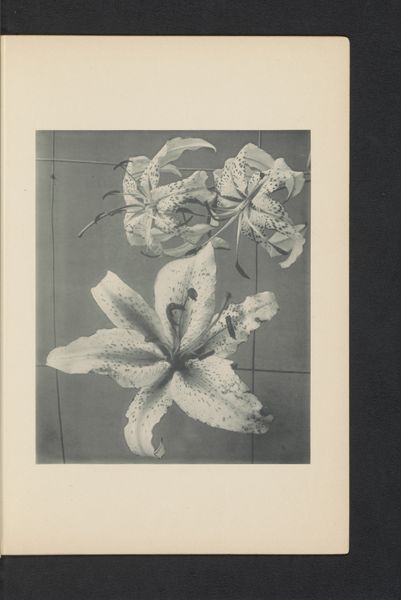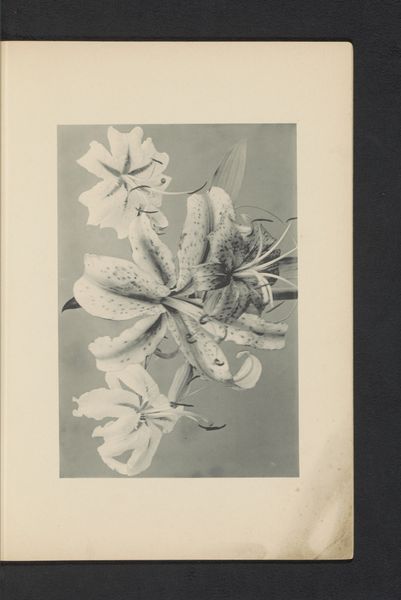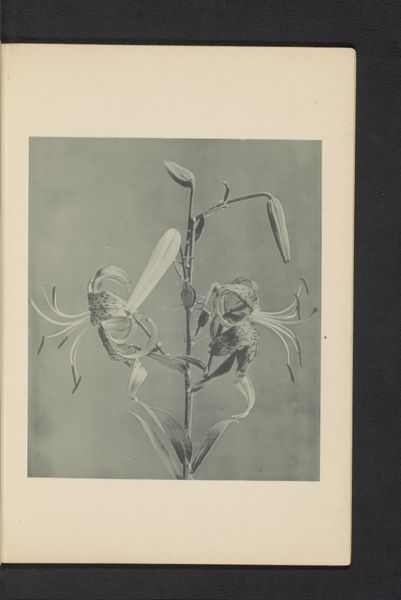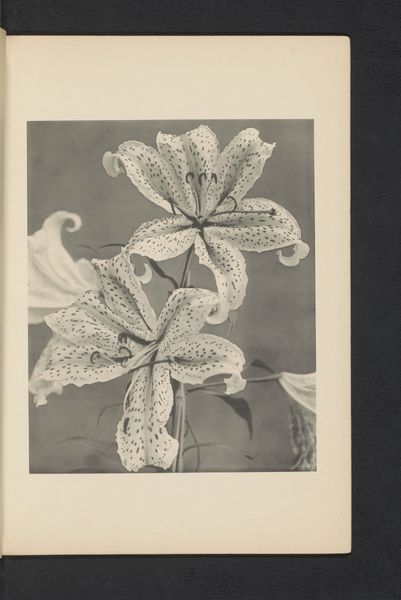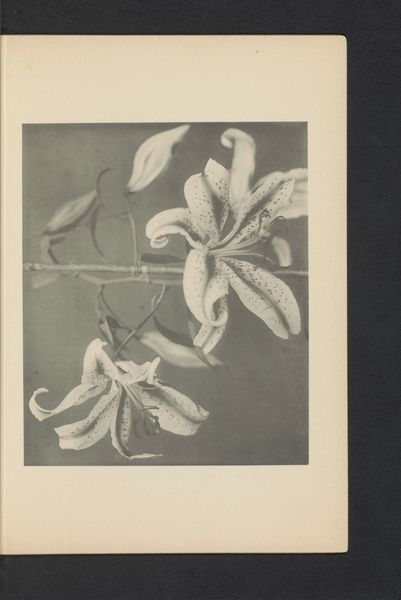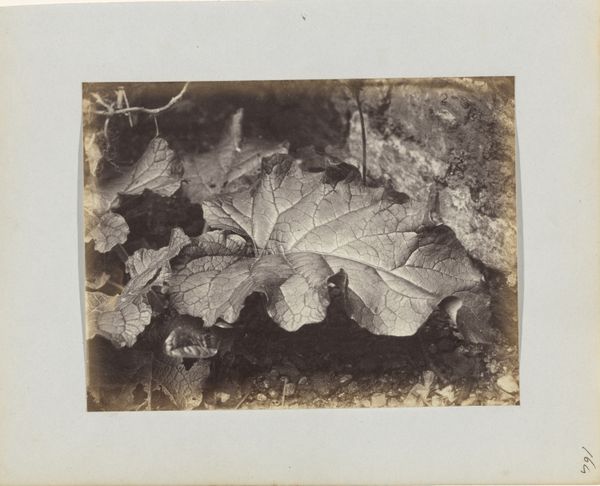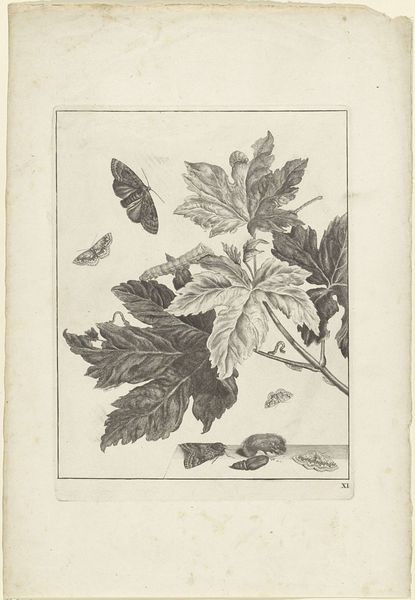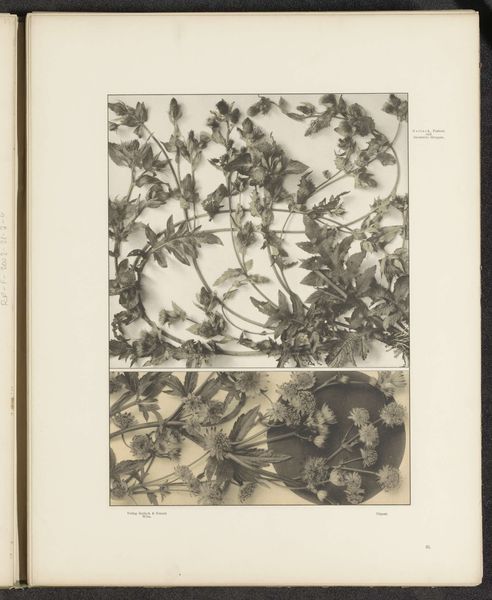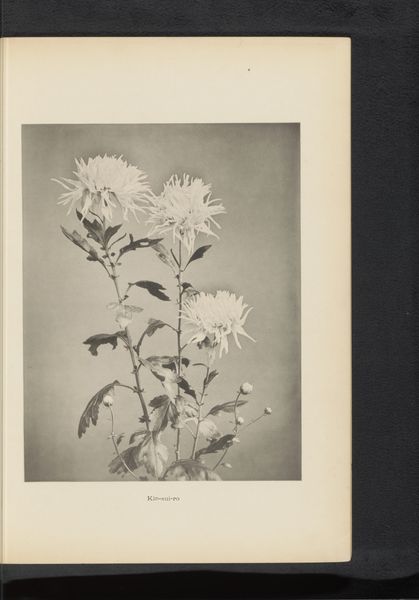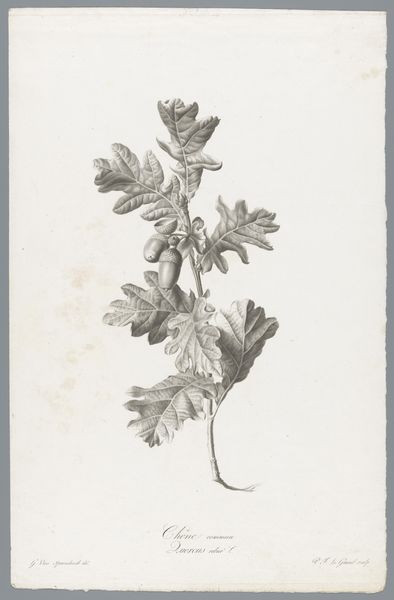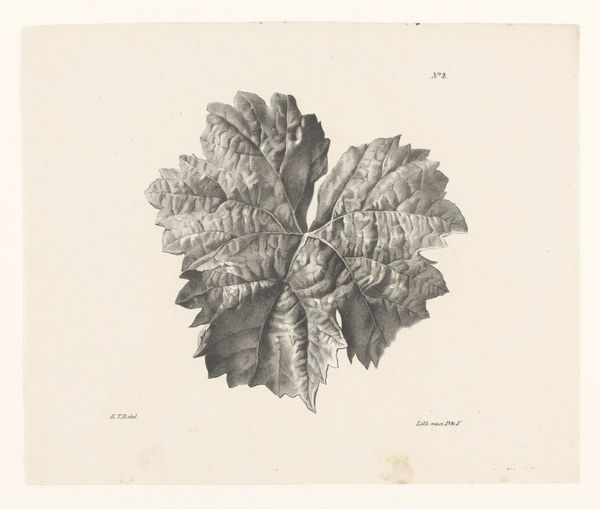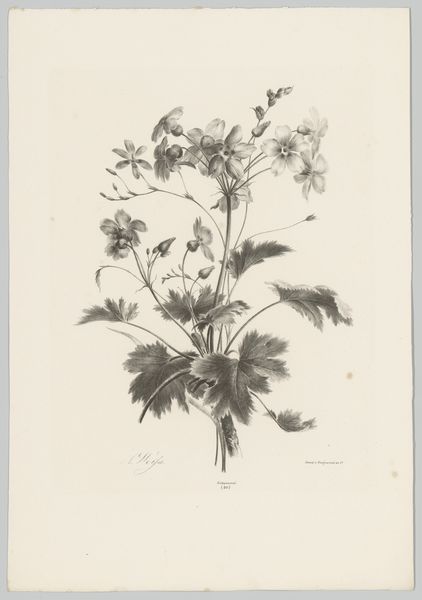
print, paper, photography
#
toned paper
#
pale palette
# print
#
white palette
#
paper texture
#
paper
#
photography
Dimensions: height 232 mm, width 275 mm
Copyright: Rijks Museum: Open Domain
Curator: Before us, we have "Japanse lelie" ("Japanese Lily") by Kazumasa Ogawa, created before 1895. The medium is print, executed through photography on paper. What strikes you first about it? Editor: The mood. It’s like a faded dream, a whisper of a memory. Those speckled lilies—are they real? They look almost like ink blots, suspended in time. The subdued, almost ghostly palette reinforces that ethereal feel. Curator: Ogawa was a pivotal figure in introducing photomechanical printing to Japan. His work significantly shaped the perception of Japanese aesthetics abroad, feeding into the Japonisme movement and Western orientalist views. Editor: Japonisme—absolutely. But it's less the bold graphics you often associate with that and more a sense of ephemeral beauty. I can almost smell the subtle fragrance wafting from the image. It reminds me of pressed flowers in an old book. Curator: The choice of subject, the lilies, aligns perfectly with the symbolic language of flowers popular in both Japanese and Western art at the time. The image itself circulated widely in albums aimed at foreign audiences eager for glimpses of Japan. Editor: Right, and the choice of the subdued monochromatic tones, almost a gray wash, adds to the photograph’s impact and elevates it above being merely representational. It’s more of a meditation, isn't it? I imagine how viewers then probably projected a kind of quiet exoticism onto the culture. Curator: Precisely. These photographic prints catered to that desire for a controlled, curated version of Japan. Ogawa walked a fine line, though. While benefiting from Western fascination, he also contributed to shaping Japanese visual identity. Editor: The picture creates a stillness that, after spending some time with it, feels… poignant. Makes you wonder about those lilies and everything they represent. Curator: Indeed, thinking about the historical moment reminds us that "Japanse lelie" is much more than a beautiful image. It's a potent artifact in understanding cross-cultural dialogues.
Comments
No comments
Be the first to comment and join the conversation on the ultimate creative platform.
